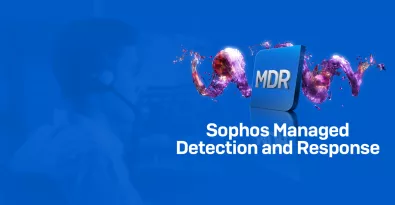An attack surface in cybersecurity is the entire area of all the possible points of entry through which a cybercriminal can penetrate your networks, applications, or systems.
Attack Surface Explained
Your attack surface is the sum of all vulnerabilities, pathways, or attack vectors that hackers can exploit to gain unauthorized access to your network or sensitive data to carry out a cyberattack.
Due to the widespread adoption of cloud services and hybrid remote work models, your attack surface is increasing and becoming more complex by the day. This can lead to a greater risk of a cyberattack. Read on to learn more about which elements are part of your attack surface and how you can protect it.
What Is an Attack Surface?
An attack surface refers to the sum total of all the possible points or avenues through which an attacker can potentially compromise the security of a system, network, application, or organization. It represents the various entry points and vulnerabilities that can be exploited by malicious actors to gain unauthorized access, steal data, disrupt services, or carry out other malicious activities.
What Are the Main Elements of an Attack Surface?
The attack surface can include a wide range of elements, such as:
- Network Interfaces: This includes all network-connected devices and ports, such as routers, switches, firewalls, and servers, which can be potential entry points for attackers.
- Software Applications: Any software running on a system can introduce vulnerabilities. This includes not only the operating system but also third-party applications, services, and custom-developed software.
- Web Applications: Websites and web services are common targets in your attack surface. Vulnerabilities in web applications, such as SQL injection, cross-site scripting (XSS), and cross-site request forgery (CSRF), can provide attackers with unauthorized access or the ability to manipulate data.
- User Accounts and Authentication Systems: Weak or compromised user accounts, passwords, and authentication mechanisms can be exploited to gain unauthorized access.
- External Dependencies: Third-party services, libraries, and APIs that a system relies on can introduce security risks if they are not properly secured or if vulnerabilities in them are exploited.
- Physical Access Points: Physical infrastructure, such as data centers, servers, and network equipment, can also be part of the attack surface if not adequately protected.
- Human Elements: Employees and users can inadvertently or intentionally introduce security risks through actions like social engineering, phishing, or insider threats.
- IoT Devices: Internet of Things (IoT) devices can expand the attack surface if they are not securely configured or updated.
Keep in mind that as enterprise networks become more complex, they increase your attack surface and introduce new threats into your infrastructure.
How Can I Reduce My Attack Surface?
Reducing the attack surface is a fundamental aspect of cybersecurity. Organizations and individuals should implement security best practices, including patching and updating software, using strong authentication methods, employing network security measures like firewalls, and educating users to minimize the number of potential vulnerabilities that can be exploited by attackers. Regular security assessments, vulnerability scanning, and penetration testing are also used to identify and mitigate weaknesses in the attack surface.
Here are some steps to help you reduce your attack surface:
- Asset Inventory: Start by identifying all the assets within your organization, including hardware, software, data, and network resources. Knowing what you have is the first step in securing it.
- Security Risk Assessment: Conduct a thorough risk assessment to identify vulnerabilities and potential threats to your assets. Prioritize the most critical risks based on their potential impact on your organization.
- Follow the Least Privilege Principle: Implement the principle of least privilege (PoLP) to limit user and system access to only what is necessary for their roles. This reduces the risk of unauthorized access and privilege escalation.
- Patch and Update Regularly: Keep all software, including operating systems, applications, and firmware, up to date with security patches. Vulnerabilities in outdated software are common entry points for attackers.
- Practice Network Segmentation: Segment your network into smaller, isolated zones with firewalls or access controls. This limits lateral movement for attackers who breach one part of the network.
- Enforce Access Control: Implement strong authentication and access control mechanisms. Use multi-factor authentication (MFA) where possible, and regularly review and revoke unnecessary access.
- Invest in Security Awareness Training: Educate employees and stakeholders about security best practices, such as phishing training. Human error is a common cause of security breaches.
- Implement Data Encryption: Encrypt sensitive data both at rest and in transit. This helps protect data even if unauthorized access occurs.
- Tighten Application Security: Regularly test and assess the security of your applications, including web and mobile apps. Employ code reviews and use security testing tools.
- Conduct Regular Vulnerability Scans: Conduct regular vulnerability scans and penetration tests to identify and address weaknesses in your systems.
- Invest in Server Hardening: Server hardening reduces your attack surface and helps you guard against ransomware, malware, and other cyber threats. This practice consists of several measures to protect your business servers' data, ports, and other components. It also accounts for protection across your firmware, hardware, and software layers.
- Have an Incident Response Plan: Develop and maintain an incident response plan to quickly and effectively respond to security incidents. The faster you can contain and mitigate an incident, the smaller the potential impact.
- Conduct Third-party Risk Management: Assess the security practices of third-party vendors and service providers. Ensure they meet your security standards, as their vulnerabilities could become your vulnerabilities.
- Implement IoT Device Security: Secure Internet of Things (IoT) devices by changing default passwords, segmenting IoT networks, and regularly updating firmware.
- Increase Your Cloud Security Posture: If you use cloud services, ensure proper configuration and security measures are in place. Cloud assets can be easily misconfigured, leading to data exposure.
- Consider Managed Detection and Response (MDR): Consider outsourcing cybersecurity to a dedicated MDR service provider in order to detect and respond to suspicious activities in real time.
- Adopt a Zero Trust Architecture: Consider adopting a Zero Trust security model, which assumes that threats exist both inside and outside the network. Trust is never implied; it must be continually verified.
Reducing your attack surface is an ongoing process, and it requires a combination of technology, policies, and user awareness. Regularly reassess your security posture and adapt your strategies as new threats emerge or your organization evolves.
What Are the Greatest Security Risks to My Attack Surface?
The specific risks to your attack surface can vary widely depending on the nature of your organization, the technology you use, and your security posture. However, some common risks to consider include:
- Unpatched Software: Failure to regularly update and patch software and operating systems can leave known vulnerabilities open for exploitation.
- Weak Authentication: Weak or easily guessable passwords, lack of multi-factor authentication (MFA), and inadequate password policies can make it easier for attackers to gain unauthorized access.
- Malware and Ransomware: Infections by malware or ransomware can lead to data theft, extortion, or the disruption of operations.
- Phishing and Social Engineering: Attackers often use social engineering tactics to trick individuals into revealing sensitive information or performing actions that compromise security.
- Insider Threats: Malicious or negligent actions by employees or other insiders can pose a significant risk.
- Third-Party Risks: If your organization relies on third-party services or software, vulnerabilities or security breaches in those systems can affect your attack surface.
- Insecure APIs: If you have application programming interfaces (APIs) that are not properly secured, they can be exploited by attackers.
- Vulnerabilities in Web Applications: Web applications are a common target. Security flaws like SQL injection, cross-site scripting (XSS), and insecure direct object references can lead to breaches.
- Network Vulnerabilities: Open ports, misconfigured firewalls, and weak network security can make your network susceptible to attacks.
- Outdated Security Policies: If your security policies are not up to date or not followed rigorously, they can create vulnerabilities.
- Lack of Monitoring and Detection: Without effective monitoring and intrusion detection systems, you may not be aware of breaches until it's too late.
- Supply Chain Attacks: Attackers may target your supply chain to compromise the products or services you rely on.
- Zero-Day Exploits: Attacks that leverage previously unknown vulnerabilities (zero-days) can be difficult to defend against.
- Cloud Security: If you use cloud services, misconfigurations or inadequate security practices can expose your data and systems.
To effectively manage and mitigate these risks, it's important to conduct regular risk assessments, implement security best practices, educate employees about security threats, and stay updated on the evolving threat landscape. Additionally, a proactive and layered security approach that includes firewalls, intrusion detection systems, encryption, access controls, and incident response plans can help reduce your attack surface and defend against various threats.
Learn more about how Sophos can help reduce your organization’s attack surface and continuously monitor and protect it, 24/7. Get in touch with a Sophos cybersecurity expert today.


